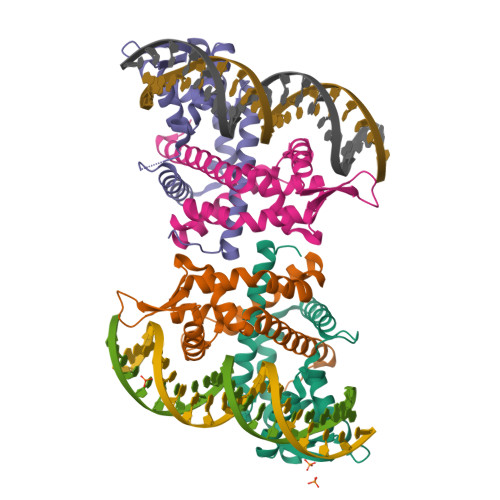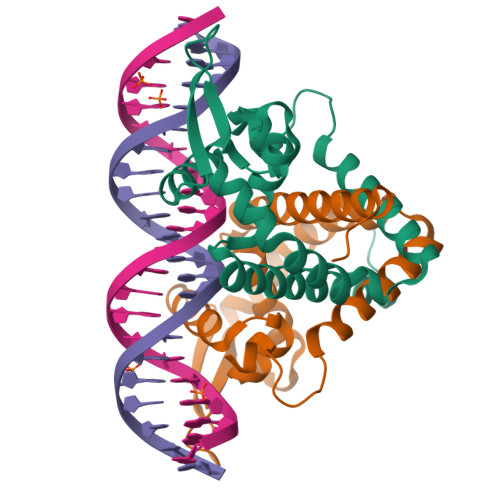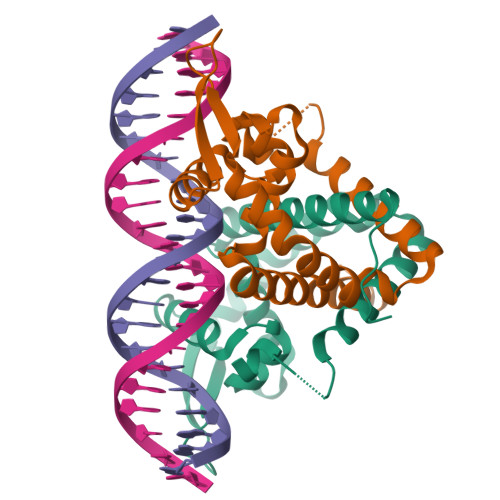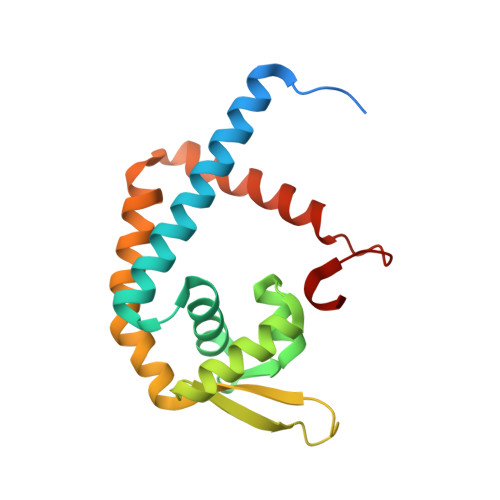Investigation of DNA Sequence Recognition by a Streptomycete Marr Family Transcriptional Regulator Through Surface Plasmon Resonance and X-Ray Crystallography.
Stevenson, C.E.M., Assaad, A., Chandra, G., Le, T.B.K., Greive, S.J., Bibb, M.J., Lawson, D.M.(2013) Nucleic Acids Res 41: 7009
- PubMed: 23748564
- DOI: https://doi.org/10.1093/nar/gkt523
- Primary Citation of Related Structures:
3ZPL - PubMed Abstract:
Consistent with their complex lifestyles and rich secondary metabolite profiles, the genomes of streptomycetes encode a plethora of transcription factors, the vast majority of which are uncharacterized. Herein, we use Surface Plasmon Resonance (SPR) to identify and delineate putative operator sites for SCO3205, a MarR family transcriptional regulator from Streptomyces coelicolor that is well represented in sequenced actinomycete genomes. In particular, we use a novel SPR footprinting approach that exploits indirect ligand capture to vastly extend the lifetime of a standard streptavidin SPR chip. We define two operator sites upstream of sco3205 and a pseudopalindromic consensus sequence derived from these enables further potential operator sites to be identified in the S. coelicolor genome. We evaluate each of these through SPR and test the importance of the conserved bases within the consensus sequence. Informed by these results, we determine the crystal structure of a SCO3205-DNA complex at 2.8 Å resolution, enabling molecular level rationalization of the SPR data. Taken together, our observations support a DNA recognition mechanism involving both direct and indirect sequence readout.
Organizational Affiliation:
Department of Biological Chemistry, John Innes Centre, Norwich Research Park, Norwich NR4 7UH, UK.



















